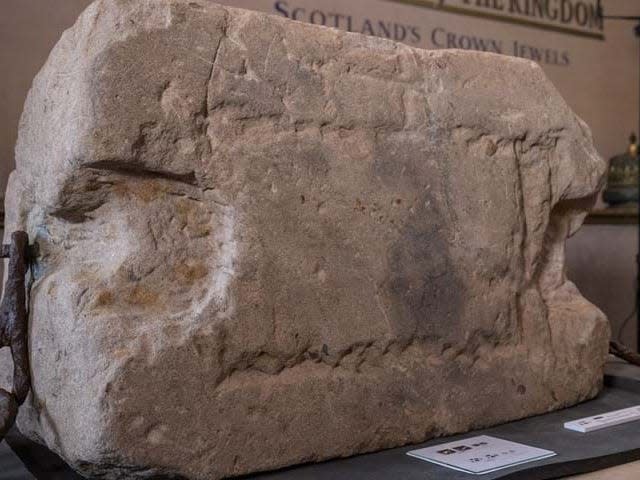The 'stone of destiny' — an 800-year-old boulder symbolizing the Scottish monarchy — is set to be displayed at King Charles' coronation. Researchers have only just discovered mysterious markings set in its ancient faces.

Researchers discovered new markings on the Stone of Destiny ahead of King Charles' III coronation.
The stone has been used in English coronations for hundreds of years.
One of the newest discoveries includes markings that could be Roman numerals.
The Stone of Destiny, a 13th-century sandstone symbol of Scotland's monarchy, will be delicately transported from Scotland to Westminster Abbey ahead of the May 6 coronation of King Charles III.
The stone has been a part of English coronations for centuries, yet ahead of Charles' coronation, scientists in a press release said they have discovered never-before-observed details about the stone, thanks to 3D modeling.
The modeling was done to help measure the stone, which will be placed inside Charles' Coronation chair, but revealed more than the researchers had hoped for.
"It's very exciting to discover new information about an object as unique and important to Scotland's history as the Stone of Destiny," Ewan Hyslop, Head of Research and Climate Change at HES, said in the release.
One of the discoveries includes four markings on one face of the rock that appear to be Roman numerals —three X's and one V — Historic Environment Scotland, a public body to preserve Scotland's history that maintains the stone, said.
However, their exact meaning remains unknown, Hyslop said.
The markings also helped researchers to further place the stone's origins, with the researchers concluding it is most likely a sandstone from the Scone Sandstone Formation around Scone Palace in Scotland. It also revealed wear and tear over the years— including when the stone was broken in half in 1950 during an unsuccessful heist to return the stone to Scotland — and the work done to fix it.
"The high level of detail we've been able to capture through the digital imaging has enabled us to re-examine the tooling marks on the surface of the Stone, which has helped confirm that the Stone has been roughly worked by more than one stonemason with a number of different tools, as was previously thought."
Another analysis tool known as X-ray fluorescence was used by researchers to find traces of copper alloy, meaning that for a prolonged period, there may have been a bronze or brass item placed on the stone that is no longer there. The XRF analysis also found "microscopic traces" of gypsum plaster on the stone, meaning that at some point in history, at least one person may have tried to make a cast of the rock.
"We may not have all the answers at this stage, but what we've been able to uncover is testament to a variety of uses in the Stone's long history and contributes to its provenance and authenticity," Hyslop said in the statement.
The Stone of Destiny was repatriated to Scotland in the 1990s after English monarchy took hold of it six centuries earlier. An ancient legend says the stone would be able to recognize its rightful monarch, the BBC reported.
HES did not immediately respond to Insider's request for comment.
Read the original article on Insider

